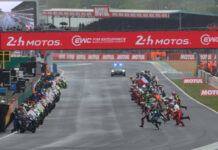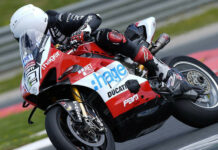Japan Grand Prix debrief with Hirohide Hamashima Round 15: Japan GP Post-race debrief Twin Ring Motegi Bridgestone slick compounds available: Front: Soft, Medium, Hard. Rear (asymmetric): Soft, Medium Sunday’s Japanese Grand Prix was a dramatic event with three riders penalised for jump-starts and being given ride-through penalties, five riders crashing out in separate incidents and another four recovering and rejoining after running off-track. All weekend the pace was very quick, as a combined result of partial resurfacing work to repair damage inflicted by the earthquake earlier this year, machine development over the past 12 months and the selection of softer compound rear slick tyre options for Motegi this year. On Saturday a new pole position record was set by Casey Stoner and in the race Dani Pedrosa set a new lap record. Pedrosa took his first premier class victory at the Honda-owned Motegi circuit ahead of Jorge Lorenzo, whilst Stoner recovered from running off track to finish third. With three round remaining in the championship, Stoner holds a 40 point lead over Lorenzo and mathematically has his first chance to seal his second World title at his home round in Australia next time out. Q & A With Hirohide Hamashima Assistant to Director, Motorsport Tyre Development Division Q: Why were the laptimes so much faster at Motegi this year? A: “It is true that the laptimes were quite a lot faster this year Casey’s pole time was 1.8seconds faster than last year and Dani’s new lap record was one second under the previous record and also 1.3seconds faster than last year’s fastest race lap. “Although of course it is very difficult to quantify exactly, I believe the main reason for this improvement is the partial resurfacing of the circuit that was conducted to repair the damage caused by the March earthquake. Approximately 75 per cent of the circuit’s surface is new and there have been many races since the tarmac was laid, including most recently the IndyCar series race two weeks ago, so the grip level is very good. It is also very smooth which adds to its advantage. “I think there are two other factors too the hard work of the teams and the development of the machines since last year, and secondly we selected softer rear tyre options for Motegi this year and I believe this contributed, specifically on Saturday during qualifying. “Last year, all riders raced on the medium compound rear that showed good performance and had no problems at all, which was then the softer of the two options. This year, Dani won using the same medium compound rear, but because we have gone one step softer, it was the harder of the two available options. On the same tyres, his fastest race lap was 1.3seconds faster than the best from last year, which shows combined bike and track improvements, but in qualifying when most riders recorded their best laps on the newly-allocated soft rear, the improvement over last year was 1.8seconds, so I believe this is the difference made by the softer rear tyre allocation. Based on this, we can see that bringing the soft compound rear here was worth around 0.5seconds a lap.” Q: Softer rear slicks were selected this time after rider requests for better warm-up what was the feedback? A: “Using the soft compound rear slicks for the first time at Motegi meant that the qualifying times in particular were faster, as I said above, but also it meant that race tyre choice was more mixed. Last year, everyone used the medium compound rear tyre for the race, but this year six riders used the medium and the remaining 12 starters chose the soft compound, which provided an interesting comparison of performance. Warm-up performance was certainly improved, even when race-day track temperature was only 26 degrees Celsius, the lowest of the weekend. But I am also happy that so many riders could get it to work consistently over race-distance, and the fact that so many used it tells me that it was right decision to revise our allocation for this year, and in doing so directly answer rider calls this year for softer compounds that reach their optimum working temperature more quickly.”
Bridgestone Tire Debrief On MotoGP At Motegi
Bridgestone Tire Debrief On MotoGP At Motegi
© 2011, Roadracing World Publishing, Inc.






